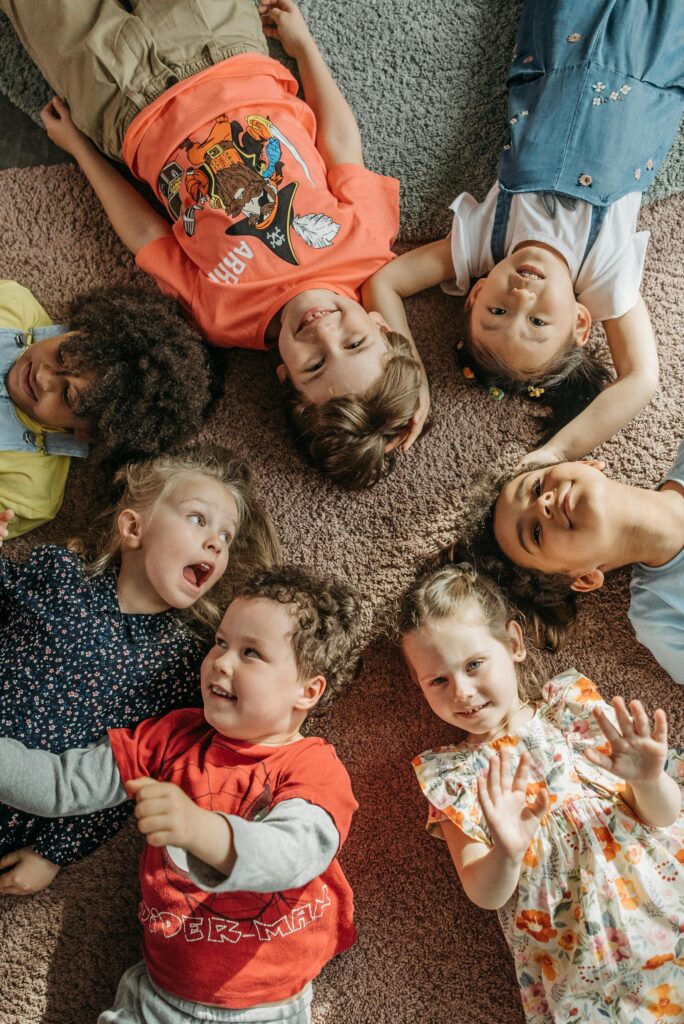Children instinctively protect themselves from emotional pain. They tend to hide their feelings, often making it hard to tell when they are struggling mentally. Most children try very hard to be happy and it can be misleading to think that when they smile, laugh and play, they are not feeling sorrow or fear. Children are affected by stress, loss and trauma – but they don’t always show it or even realize it themselves.
Children often look like they are having fun, even when they are troubled or living through extreme stress and trauma. This is baffling to some people, especially when the child has been obviously emotionally hurt. They often hide their feelings, even to themselves. They can sometimes try so hard to play and continue with usual childhood fun and games that nobody around them realizes the extent of their suffering. It can be hard for children to face and express their sadness, anger and grief.
A psychological explanation for why childhood mental distress can be invisible to others is that unconscious defense mechanisms (defenses) are used to protect a disturbed mind and troubling feelings. Defenses are strategies that are used in order to cope with the emotional difficulties in life. Children use these defenses liberally – and this often means that the distress they are in is out of the child’s conscious awareness. These defenses are both helpful and harmful, depending on which ones are used and to what extent. British child psychotherapist, Graham Music, explains that the adaptiveness of defenses falls away as the environment is no longer a threat.
Under conditions of stress, deprivation, danger, neglect and suffering, children – and adults too – might have a better chance of coping if they use defenses in order to survive the trauma that they are experiencing. Some children, even under extremely traumatic circumstances, do not display any symptoms of distress at all. They seem to be able to push their distress so far out of their own conscious awareness that nobody, including the children themselves, recognizes that they have been affected. Some of the defense mechanisms that children often use to hide their distress from themselves and others are:
- Denial (pretend it didn’t happen)
- Idealization (imagine the other person to be powerful, excellent or without fault)
- Identification (develop or focus on an aspect of oneself in order to be the same as the other person)
- Sublimation (redirecting unaccepted feelings or impulses into activities like sport or hobbies)
Maria Anna Tallandini and Corrado Caudek have published some interesting research on the ways that children use defense mechanisms. They explain that defenses can be adaptive, constructive and helpful, making it easier for kids to handle challenges. They can also be maladaptive – often causing further problems and making life even harder for the child. The authors write that defense mechanisms protect one from anxiety and from perceived danger and stress. The threat can be real or imagined. It can either come from the outside world – perhaps in the form of a dangerous, scary or creepy person – or from inside of oneself – in the form of distressing instincts, thoughts, ideas and feelings. These internal threats can be unconscious, meaning that children don’t realize what they are protecting themselves from. One example of this is a child that makes a lot of noise because unconsciously she is feeling invisible and afraid that others will forget about her if she does not remind them of her presence.
In their research, Tallandini and Caudek noticed that younger children use defense mechanisms more than older children. The use of defenses can decrease as the child grows up. Children who found it more difficult to adjust to a new environment (for example, a new school) used a larger number of defenses, as did children who were less outgoing toward others. The authors concluded that, when used too frequently, defense mechanisms can be seen as a sign of maladjustment and that a disproportional use of defenses is an indicator of psychological difficulties.
Defenses are used during the emotionally turbulent time of adolescence too. As children grow into teenagers, there is a real danger of using substances like alcohol and drugs in order to escape from their troubled minds. Other disturbing, destructive behaviours during this time can also be largely defensive, masking the underlying mental distress. Growing up, grappling with identity, sexuality and finding oneself in the world is stressful. These challenges lead a lot of teenagers towards the liberal use of defenses of different kinds. Psychological support during this vulnerable but crucial time of development is very beneficial.
Defenses have their place but despite their wisdom and usefulness, they have their limitations too. Their complications can be highly destructive – sometimes leading to behavioural and relationship problems. Your children can’t defend against and hide away from the effects of trauma, loss and abuse forever. The past usually finds its way back into conscious awareness – perhaps only in adulthood – and it can interfere with mental health. Defensive strategies can turn into lifelong patterns of behaviour. Understanding your children’s defenses can be the first step towards really getting to know them and seeing the truth of who they really are.
References
- Graham Music (2018). Nurturing Children: From Trauma to Growth Using Attachment Theory, Psychoanalysis and Neurobiology. Routledge: London
- Maria Anna Tallandini and Corrado Caudek (2010). Defense Mechanisms Development in Typical Children. Psychotherapy Research 20, no. 5: 535–545, https://doi.org/10.1080/10503307.2010.493536

